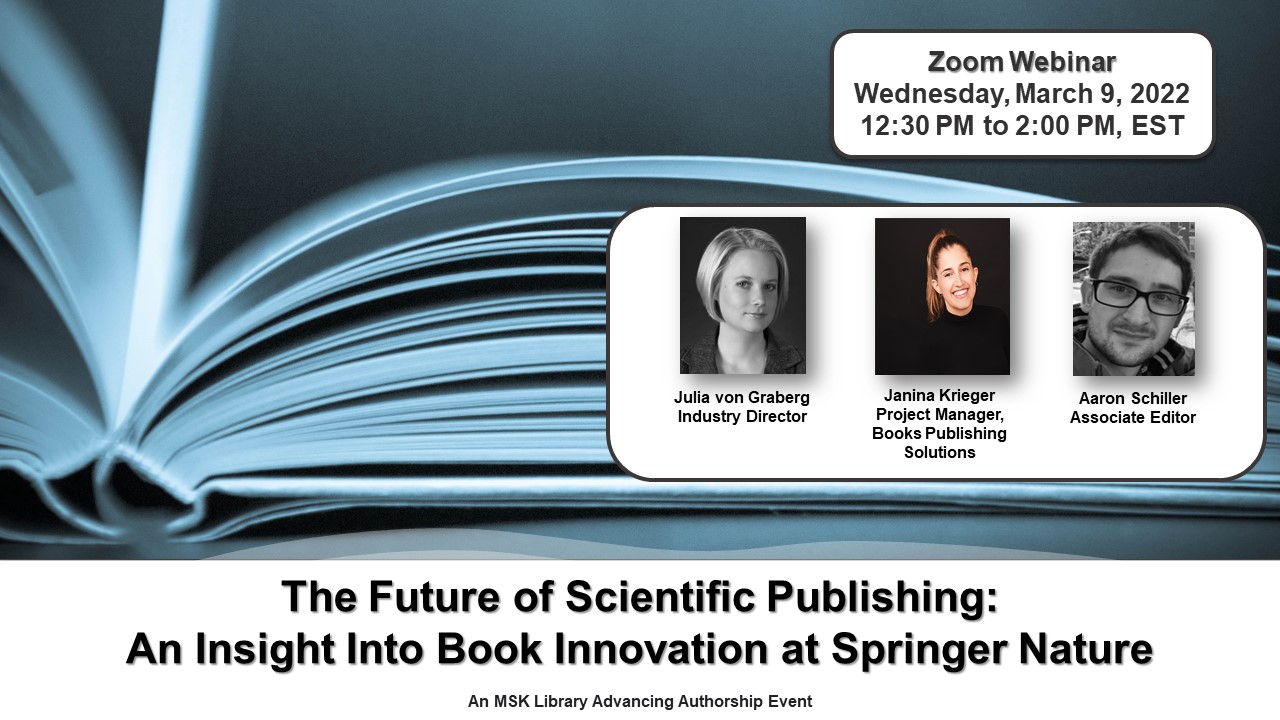Join us and discover how Springer Nature is changing how they publish books through new technology and innovative solutions. Presentations will focus on Springer’s new platform towards a personalized book and machine-generated literature overview, as well as an editor’s experience working on machine-generated text in collaboration with a subject matter expert and author.
You’ll also have an opportunity to participate in an interactive exercise where you can share your thoughts on the future of scientific publishing.
Date: Wednesday, March 9, 2022
Time: 12:30 PM to 2:00 PM, EST
Location: Zoom Webinar – Register Now
Speakers
Julia von Graberg, Industry Director, Springer Nature – Julia joined Springer Nature in 2016 as Director Pharmaceutical & Biotech Markets and in 2017 Julia’s role expanded to all of the Life Sciences, including the Health & Hospitals market. Julia holds a PhD in Chemistry from the University of Queensland, Australia (2008). Before joining Springer Nature, Julia held books editorial positions at Wiley and CSIRO Publishing.
Janina Krieger, Project Manager, Books Publishing Solutions, Springer Nature – Janina is responsible for setting up new workflows and developing new products based on AI. She joined the organization in 2017, where she worked in the editorial department before moving to Books Publishing Solutions in 2020.
Aaron Schiller, Associate Editor, Earth Sciences, Geography and Environment, Springer Nature – Aaron is focused on acquiring authored and edited books in oceanography, environmental science, sustainable development, geography (human and physical), and interdisciplinary topics related to his areas of responsibility.

 The MSK Library provides all MSK staff with access to plagiarism detection software through
The MSK Library provides all MSK staff with access to plagiarism detection software through